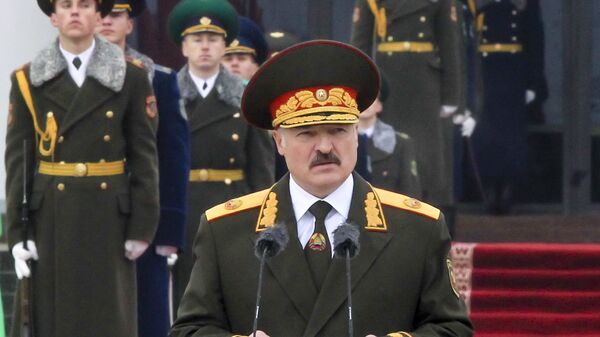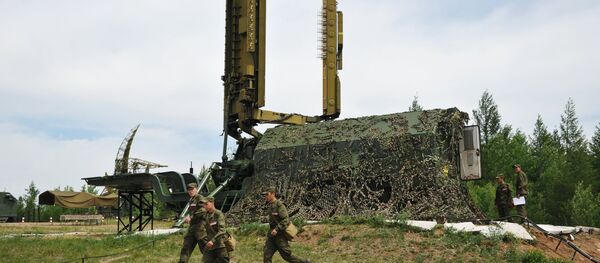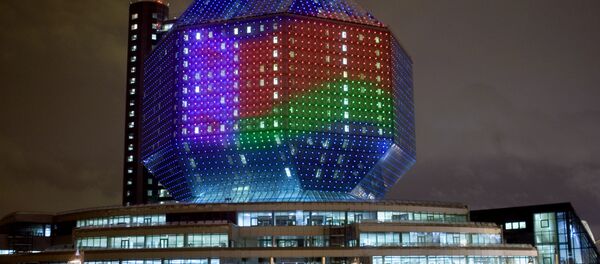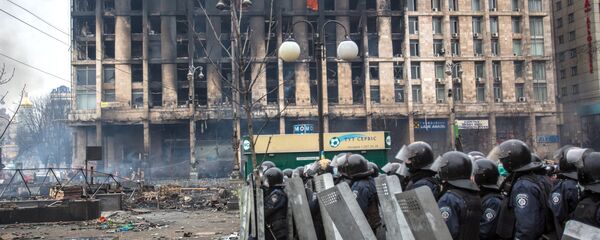Last Monday, the Belarusian parliament adopted the country's new military doctrine. According to Defense Minister Andrei Ravkov, the old doctrine, adopted in 2002, had fulfilled its strategic purpose, and no longer takes account of the realities facing the country. The revised doctrine, he says, accounts for changes in the military-political situation around the country, including the range of threats that Belarus faces.
Accordingly, he added, "our military doctrine has been deeply reworked, and is now a new document which, nevertheless, maintains a completely defensive orientation." This, the minister noted, is exemplified by the provision stipulating that Belarus's armed forces shall not be used in operations abroad.
At the same time, "a particular emphasis has been placed on the negative trends associated with developments in the concept of color revolutions, and mechanisms aimed at changing the constitutional order and violating states' territorial integrity by provoking internal armed conflicts."
The new doctrine, Ravkov noted, takes account of a series of new external and internal threats, including factors which, though formally outside the military sphere, significantly affect the country's defense. Subsequently, the range of measures that can be implemented by the state to ensure its security against these threats has been expanded.
The document takes account of "all possible forms of aggression against Belarus, including at the stage of internal armed conflict, provoked from the outside by means of hybrid warfare. Today, in additional to classical warfare, it has become common practice to use a strategy of indirect action. This strategy provides for warfare by proxy, the massive involvement of radical extremist and terrorist groups, private military campaigns, and the widespread use of civilian protest potential."
In recent years, Belarusian officials, including President Alexander Lukashenko, have repeatedly warned that they would be willing to use the country's army to combat the threat of color revolutions and hybrid warfare.
Asked to comment on the implications of the new doctrine, Vadim Trukhachev, a professor of the Department of Foreign Regions at the Russian State University for Humanities, said that it is an indication that Belarus remains wary of the threat of Western-sponsored color revolutions.
"In spite of the improvement in relations with the West, Lukashenko did not become 'one of their lads'," Trukhachev said, speaking to Russia's Svobodnaya Pressa newspaper. "He is not completely loyal, and plays his own game, while the EU and the US would prefer to see the countries that border the EU fully controlled by leaders who entirely share the Western line and weaken their ties with Russia."
Trukhachev said that he agrees with the idea that the situation in Ukraine has offered Belarus a powerful 'immunity shot' against Maidan-style revolutions, at least temporarily. "For Belarusians, Ukraine is a close, fraternal country, and they have seen what happened there following the events of Maidan."
At the same time, he noted, this kind of 'vaccination' cannot last forever, and the country's leadership is preparing ahead of time for any scenario that might arise, from protests arising from a deterioration in the standard of living, to questions involving the country's Polish minority.
For his part, Stanislav Byshok, a political commentator and analyst at the CIS-EMO Election Monitoring Organization, hinted that Belarus's new military doctrine may be connected in some way to the partial lifting of Western sanctions against the country.
At the same time, the analyst warned, color revolution technology is not the only tool Western countries may use against Minsk. "In Belarus there are hundreds of grant programs funded by European and American structures. They are aimed, most notably, at the development of self-governance. The color revolution is just one technology for a change of power in one country or another. But there are other tools, ones which are more subtle, which could be employed in Belarus."
Thankfully, Byshok explained, at least Belarus, unlike many other post-Soviet countries, does not have any territorial disputes with its neighbors. Therefore, the problem of separatism, which enemies might use to create conditions for hybrid warfare, is not an issue. "In this context, the term 'hybrid war' can be interpreted very broadly, and can include the concept of 'information war'. In this kind of war it is possible, if necessary, to organize the activity not only of local opposition, but of foreign NGOs working in the country as well."








